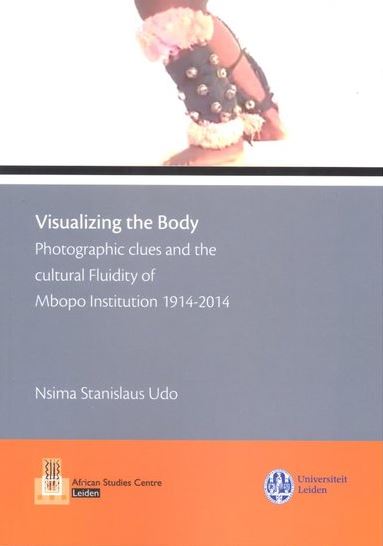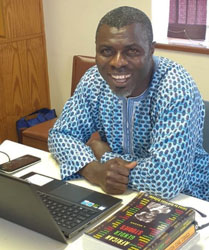Visualizing the body: Photographic clues and the cultural fluidity of Mbopo institution, 1914-2014
 This book is based on Nsima Stanislaus Udo's master's thesis 'Visualizing the body: Photographic clues and the cultural Fluidity of Mbopo Institution 1914-2014', winner of the 2019 Africa Thesis Award. This annual award for master's students encourages student research and writing on Africa and promotes the study of African cultures and societies.
This book is based on Nsima Stanislaus Udo's master's thesis 'Visualizing the body: Photographic clues and the cultural Fluidity of Mbopo Institution 1914-2014', winner of the 2019 Africa Thesis Award. This annual award for master's students encourages student research and writing on Africa and promotes the study of African cultures and societies.
This study examines the practice of mbopo ritual - a cultural rite of passage for nubile women among the Ibibio/Efik people across the previous country. Through an engaged and detailed visual analysis, the study argues that in the first decade of the 20th century, the mbopo ritual had a degree of vibrancy with an attached sense of secrecy and spiritual mystery. But between 1920 and the present, this vibrancy and spiritual undertone has been subtly but progressively compromised. A build-up of tension surrounding the ritual as a result of modern forces, not only outside missionaries, but also indigenous converts, set in motion a process that would eventually transform the ritual from a framework of actual cultural practice into the realms of "cultural reinvention" and re-rendering. Feminist critiques of the 1980s and the 1990s led to popular awareness of the damaging impact of clitoridectomy, just one core aspect of the ritual. As a direct result, clitoridectomy was outlawed across the country, leaving mbopo to be seen as a morally suspect practice. In recent years, the once vibrant, secret, and spiritually grounded rite of seclusion for nubile women has been reimagined and reinvented through public display, in art, painting, cultural dance troupes, music, and television shows.
This book was published in the African Studies Collection, issue 78, 2021.
Author(s) / editor(s)
About the author(s) / editor(s)
 Nsima Stanislaus Udo was born and brought up in Ikot Ekpene, Nigeria. He completed his BA in History and International Relations in Ile-Ife, Nigeria. He then proceeded to South Africa where he completed his Honours and Master's degrees at the University the Western Cape in Visual History. He currently lives in Cape Town where he is studying for a doctoral degree in Cultural Studies and Visual History, also at the University of the Western Cape.
Nsima Stanislaus Udo was born and brought up in Ikot Ekpene, Nigeria. He completed his BA in History and International Relations in Ile-Ife, Nigeria. He then proceeded to South Africa where he completed his Honours and Master's degrees at the University the Western Cape in Visual History. He currently lives in Cape Town where he is studying for a doctoral degree in Cultural Studies and Visual History, also at the University of the Western Cape.

